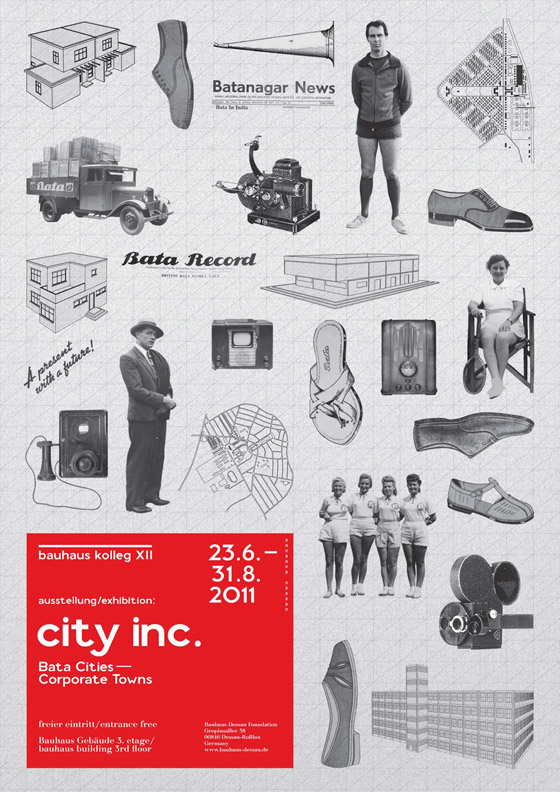
Invitation to the exhibition Bata Cities - Corporate Towns
 |
City Inc. / Bata Cities - Corporate Towns
The exhibition "City Inc." presents the legacy of a utopian city from the early 20th century. Inspired by Fordist theories, garden city principles, and socialist ideals, the Czech shoe company Bata embarked on a mission to "shoe the world." In Zlin, Czech Republic, Bata built the first company town according to modernist architectural principles, testing the idea of a model town that could be efficiently replicated.
These Bata cities, soon to be exported worldwide, all combined the same components: architecture, urban planning, management, social engineering, and communication. The geopolitical context of colonialism, as well as growing international trade and labor division, encouraged the company's expansion. Soon enough, the Bata empire formed an international corporate network of 80 Bata cities as places of production as well as a modern way of life.
The exhibition introduces two Bata satellite towns, Batanagar (India) and East Tilbury (Great Britain); two places that have developed in opposite directions depending on the remaining presence or final absence of Bata production in the city. Not only does the show provide insight into the complexities and contradictions of life in a city that has changed dramatically over the last century, it also reflects the uncertain future of these two company towns in the context of current strategies of global corporations regarding their "urban footprints."
City Inc. / Bata Cities - Corporate Towns
The urban and cultural legacies of a city utopia from the early 20th century are the subject of the exhibition "City Inc. Bata Cities – Corporate Towns." Fordism, garden city ideals, and socialism provided the ideological foundation on which the Czech shoe company Bata developed its global mission of "shoeing the world." Zlin in the Czech Republic served as the testing ground for the production of a factory town oriented around architectural modernism as a rationally manufacturable and mass-reproducible model.
The soon-to-be-exported Bata cities comprised the same components: architecture, urban planning, management, social engineering, communication. The geopolitical context of colonialism, world trade, and international division of labor stimulated the global expansion of the company. Soon, the Bata empire formed an international business network of 80 factory towns.
The exhibition presents two international satellites of the Bata company, Batanagar in India and East Tilbury in England: cities that illustrate the two opposing paths of transformation of a factory town in the 20th century according to the respective presence or absence of the company. The exhibition not only provides insights into the local complexities and contradictions of life in a Bata city but also addresses the uncertain future of these factory towns in the context of current location strategies of global companies and their “urban footprints.”
The English translation is powered by AI tool. Switch to Czech to view the original text source.











